Japan Tradition: Akita Kantō
L’Akita Kantō (秋田竿燈まつり) è il festival della città di Akita. Si celebra dal 3 al 7 agosto con lo scopo di pregare per avere un buon raccolto. Questo festival è molto particolare, e per parteciparvi c’è bisogno di avere delle abilità particolari.
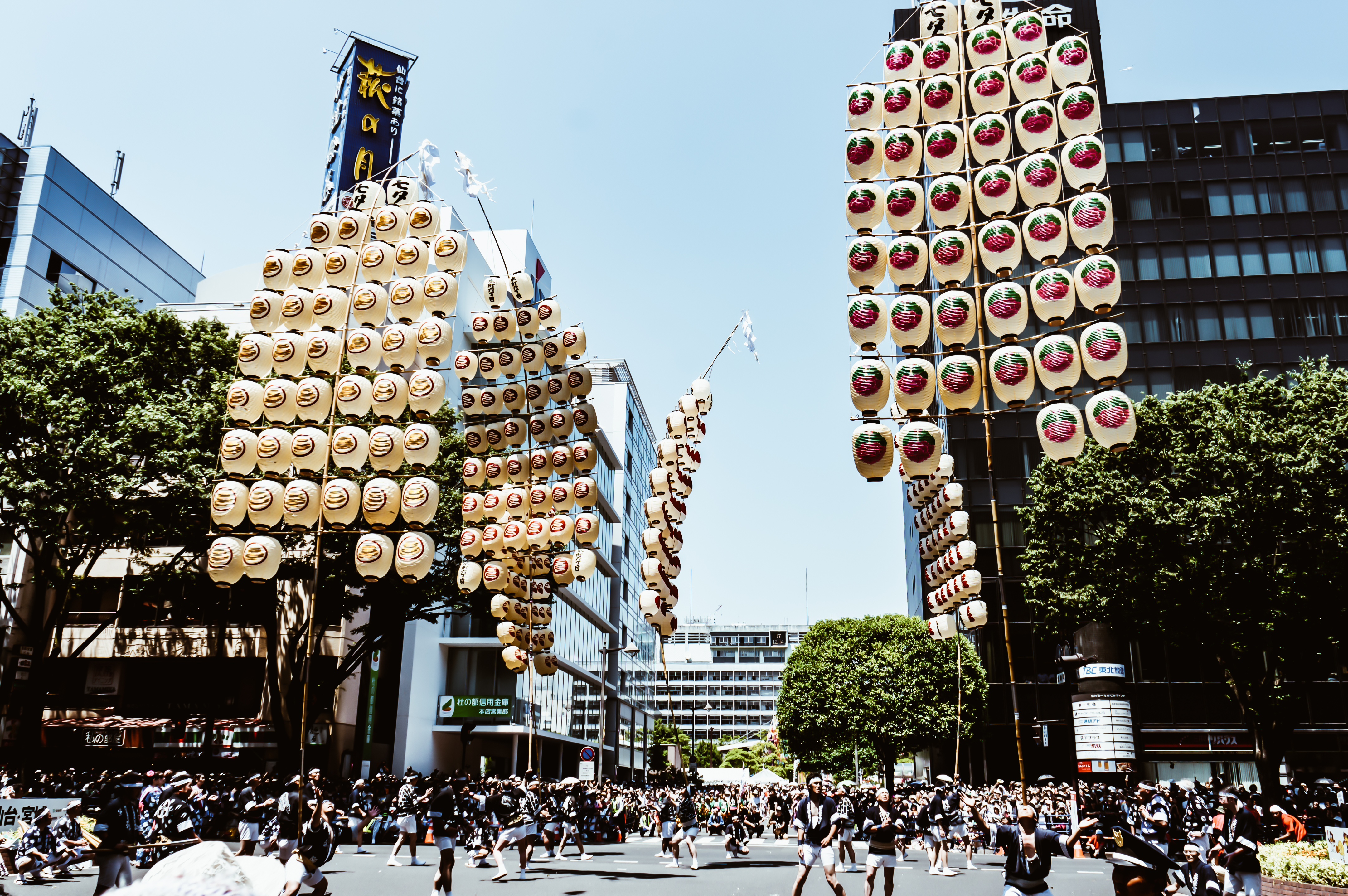
photo credits: Zamboni.
La particolarità dell’Akita Kantō
Se non avete mai avuto la possibilità di assistere a questo matsuri particolare, sicuramente oggi ne rimarrete sorpresi. Infatti, i festeggiamenti consistono del portare in parata notturna lungo le strade della città dei pali di bamboo. E fin qui potrebbe anche risultare semplice, se non fosse che questi pali hanno una lunghezza che varia dai cinque ai 12 metri. Inoltre, in cima a questi, ci sono ventiquattro o ventisei lanterne con annessi gohei (bacchette di legno). Il peso totale di questi pali può arrivare a 50 chili. Essi vengono trasportati per le strade della città sui palmi, le fronti, le spalle o la schiena dei partecipanti.
L’Akita Kantō è uno dei principali festival della regione Tōhoku assieme al Tanabata, l’Aomori Nebuta Matsuri e l’Hanagasa Matsuri. Infatti, nel 1980 è stato definito come Proprietà importante e intagibile della cultura popolare.
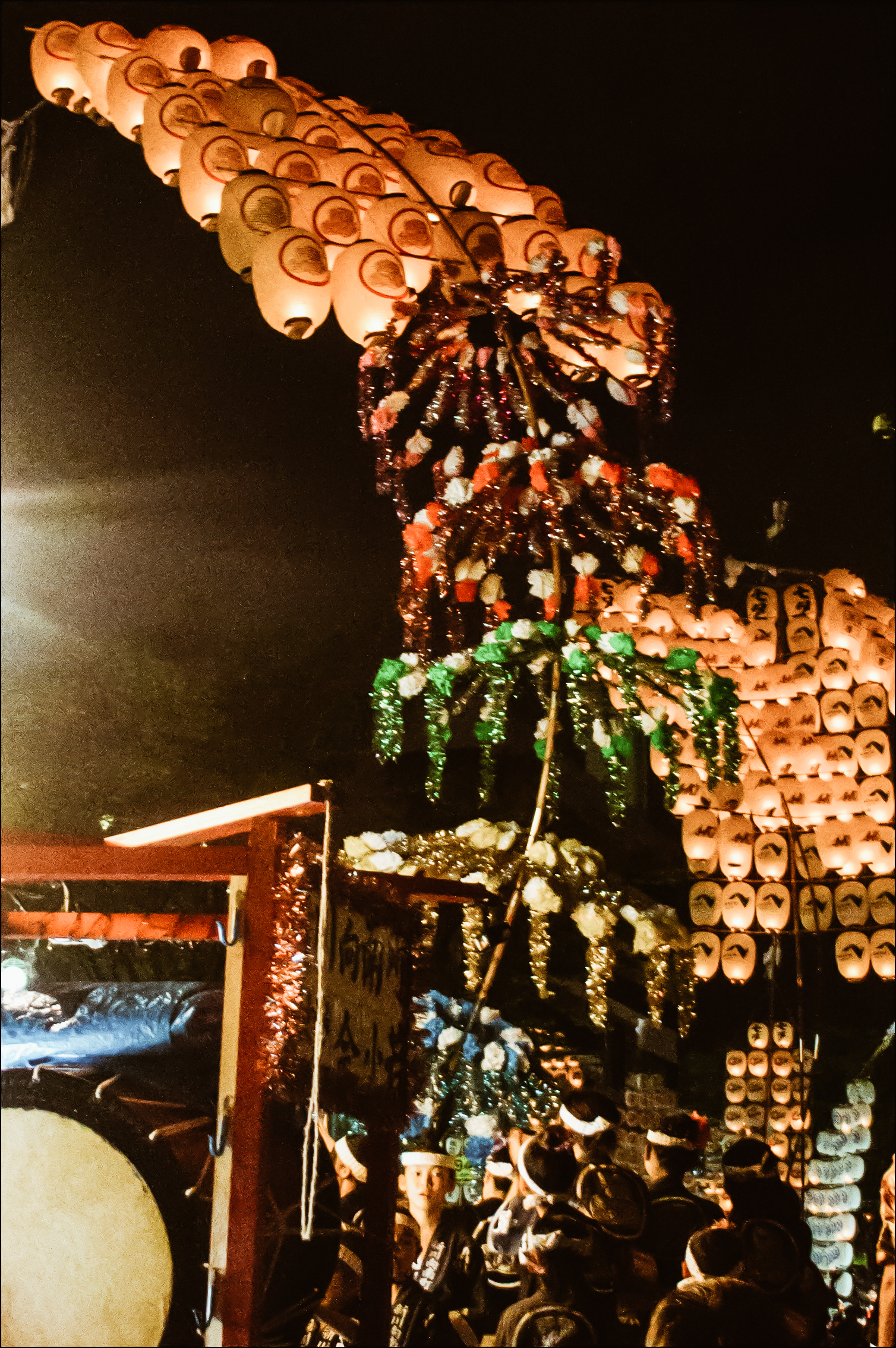

photo credits: Laura Tomàs Avellana, hitoyam
Le Origini
Il festival ha origine dal Neburi Nagashi, celebrazione che aveva lo scopo di liberarsi dalle malattie e dalla negatività durante l’estate. Già presente durante il periodo Horeki, nel mezzo dell’era Edo, si possono trovare testimonianze in diversi documenti storici. Una di queste è “Yuki no huru michi (The road where it snows)” scritto da Soan Tsumura nel 1789. Questo è infatti la documentazione più antica che porta descrizione del Neburi Nagashi. Qui si dice che il festival si teneva il 6 luglio secondo il calendario lunare ed è definito la tradizione originale di Akita.
Durante il Neburi Nagashi, le persone decoravano gli alberi e le piante di bamboo con pezzi di carta dove scrivevano i propri desideri. Successivamente, i partecipanti camminavano per la città con queste piante assieme a candele e lanterne. In seguito, il Neburi Nagashi prese il nome di Kanto.



photo credits: foxeight
La storia dell’Akita Kantō
Il nome attuale dell’evento è stato usato per la prima volta da Tetsusaku Okubo nel 1881. Il questo periodo infatti, l’imperatore Meiji fece visita ad Akita. Qui Okubo suggerì di intrattenere l’imperatore con la performance Kanto.
A causa del cambio del calendario da lunare a solare nel 1872 e visto il numero minore di Kanto che partecipavano al festival, la realizzazione di quest’ultimo cominciò a risultare incerta.
Tuttavia nel 1908 l’imperatore Taisho visitò Akita e si innamorò della performance Kanto. L’anno successivo, una ditta di bibite pullicizò i propri prodotti sulle lanterne dei Kanto. Questi due eventi portarono alla restaurazione del Kanto vestival e al suo cambio di date, per evitare la stagione delle piogge.
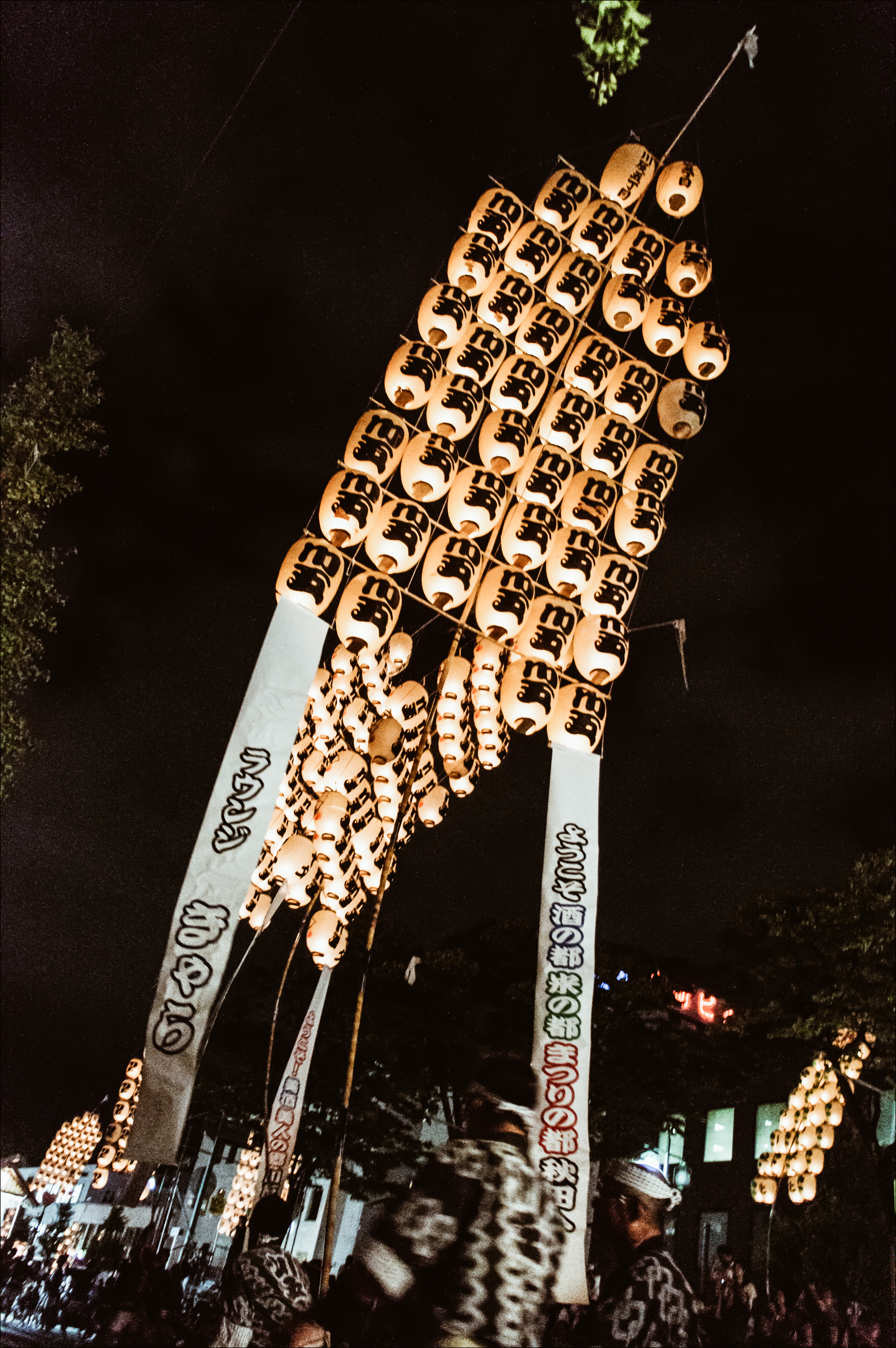
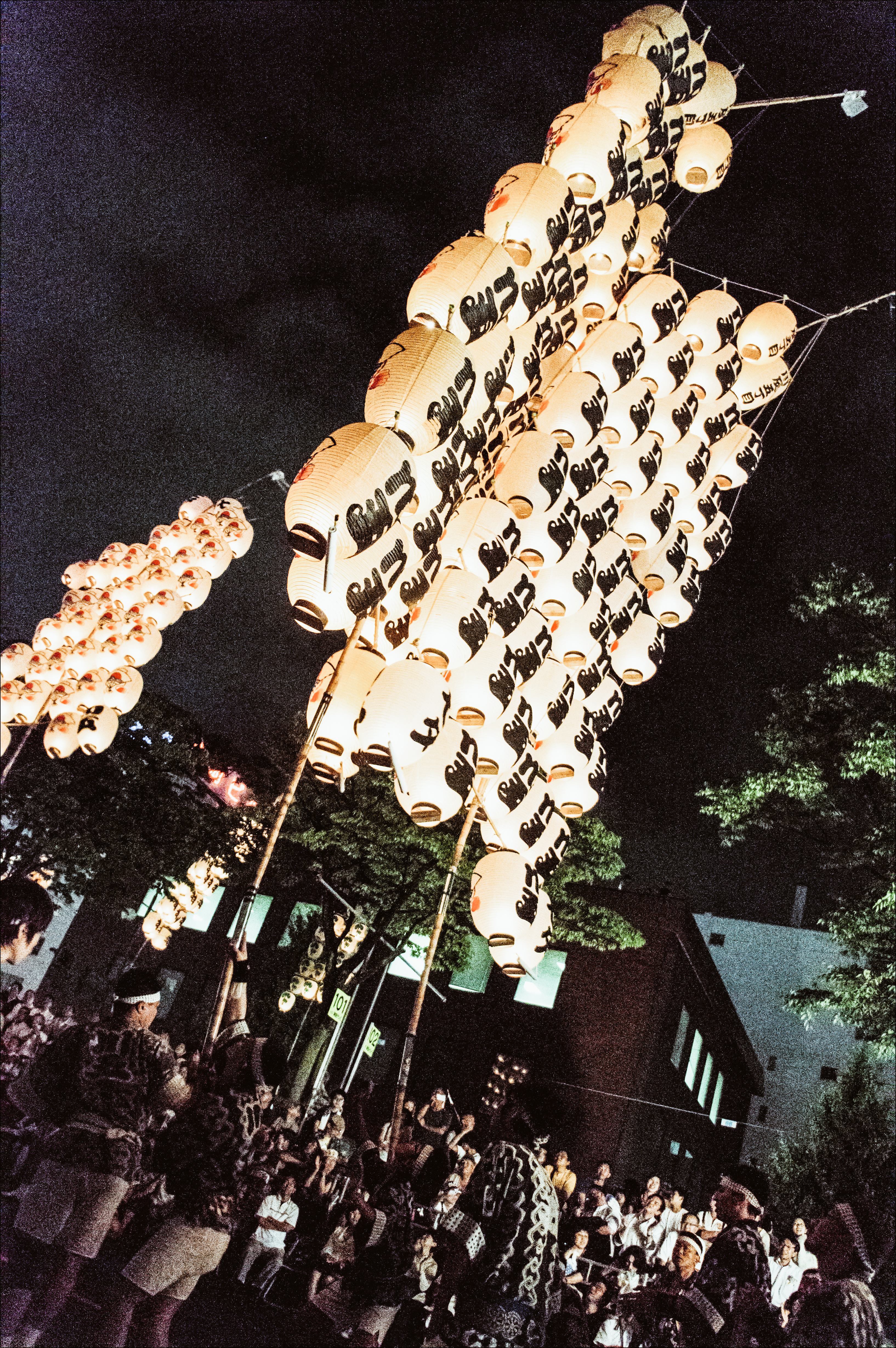
photo credits: Laura Tomàs Avellana
A seguito di ciò, il numero dei visitatori aumentò e venne fondata nel 1931 la Kanto Society, incaricata di gestire il festival.
Cancellato durante il periodo della Seconda Guerra Mondiale, nel secondo dopoguerra fu stabilito il Comitato Esecutivo del Kanto Festival.
Nel 1976, dopo una performance di successo a San Diego, negli USA, il Kanto divenne popolare in varie nazioni.
Cos’è il Kantō
Letteralmente, Kantō vuol dire “un palo con le lanterne” ed è fatto da pali di bamboo e lanterne in carta di riso, appese su barre orizzontali.
Il palo di bamboo principale è chiamato “Oyatake” e sono tutti prodotti in Giappone e dalle fattezze alquanto spesse. Ci sono addirittura delle regole molto severe sullo spessore e sugli spazi di giunzione dalla radice per questi pali.
Per questo, le persone che scelgono il palo devono essere molto esigenti sul tipo di bamboo utilizzato per produrre il Kantō.

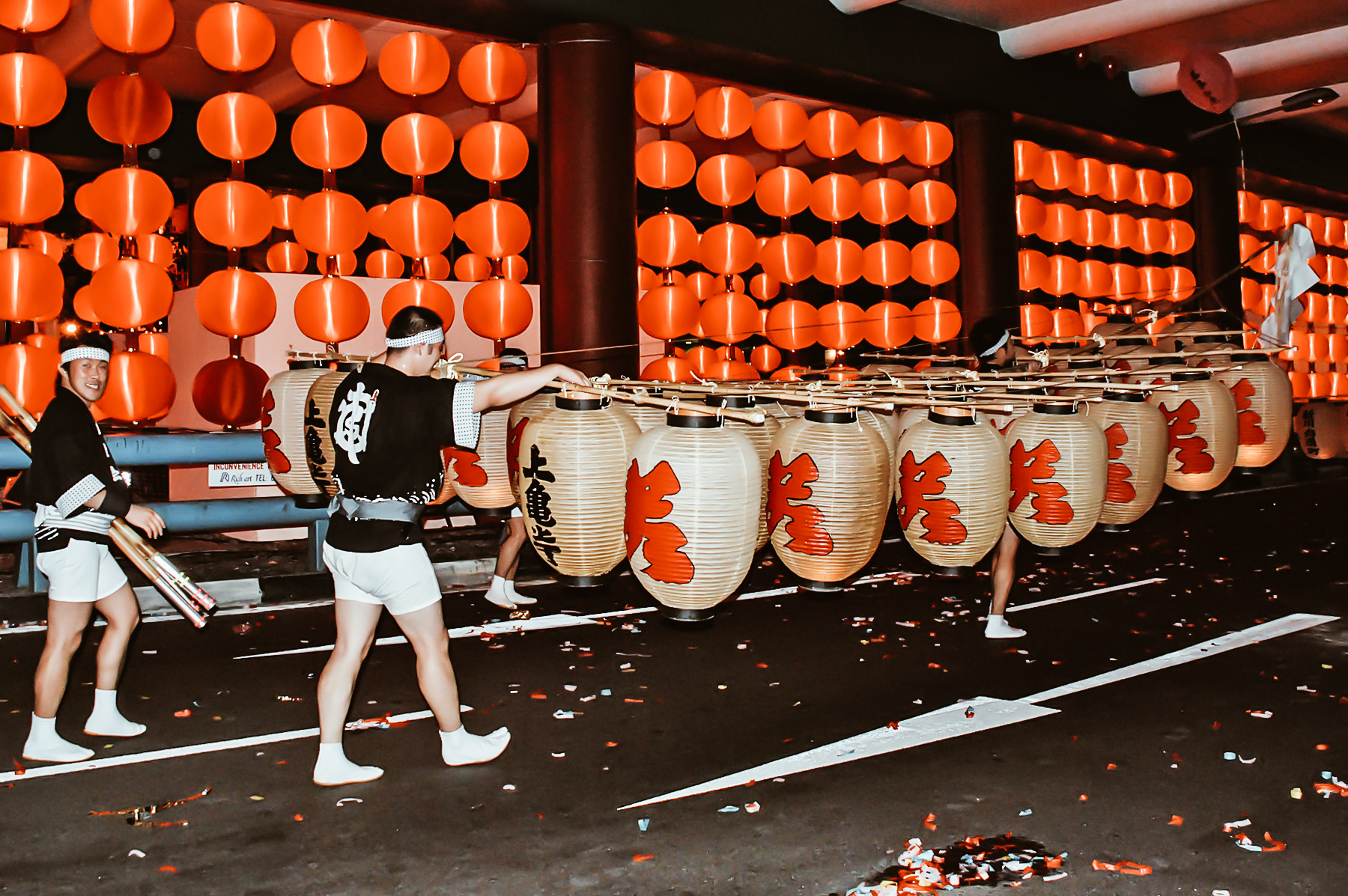
photo credits: Laura Tomàs Avellana, Choo Yut Shing
I rami orizzontali sono chiamati “Yokotake” ed è qui che vengono appese le lanterne. I pezzi di bamboo utilizzati per rendere l’Oyatake ancora più lungo sono chiamati “Tsugidake”.
I Kantō si suddividono in quattro categorie dalla lungezza regolata: Oowaka, Chuwaka, Kowaka e Youkawa.
Le tecniche di Kantō
Ci sono varie tecniche per utilizzare il Kantō dal nome “Myogi” e suddivise in 5 catgorie.
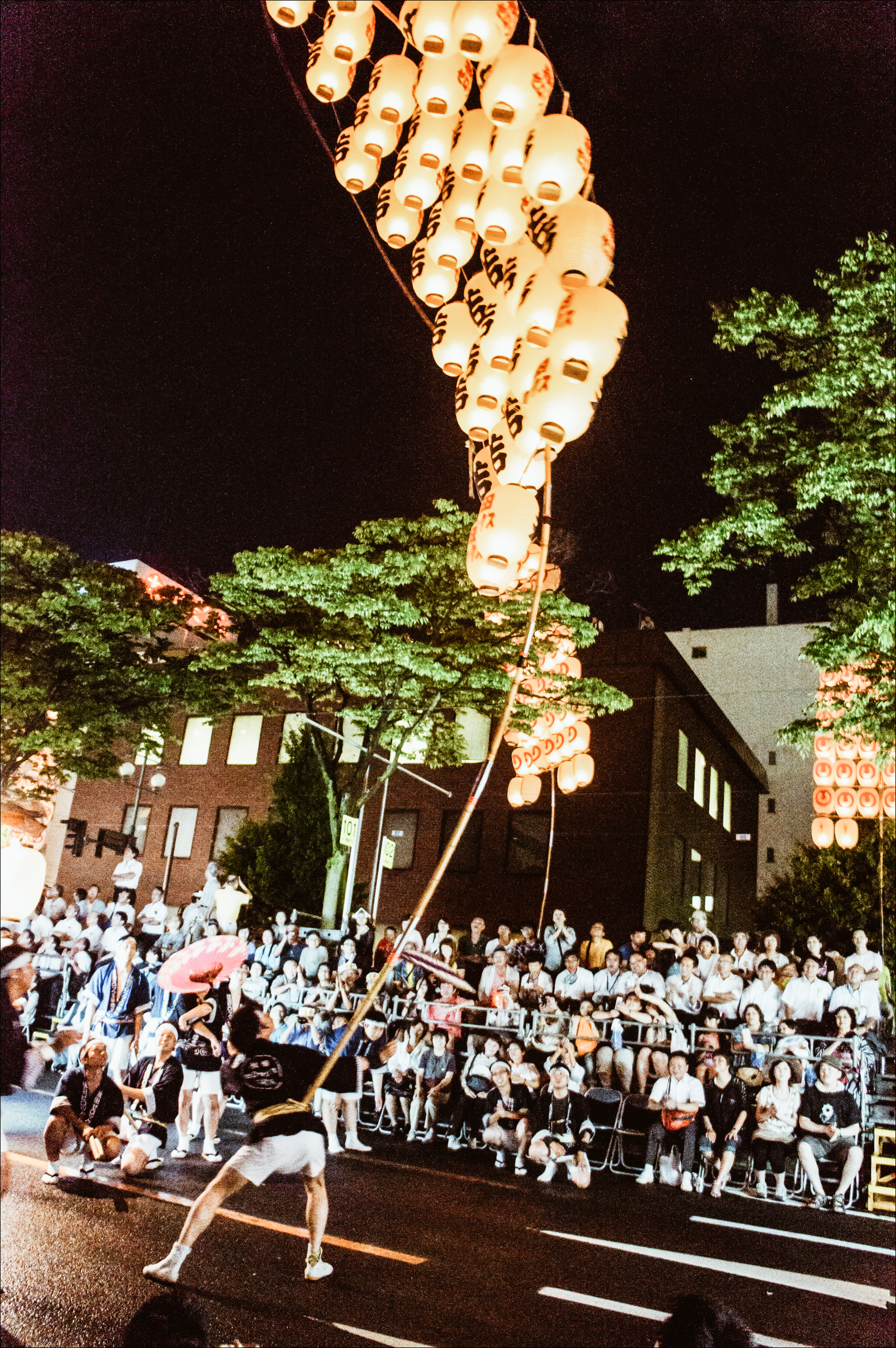

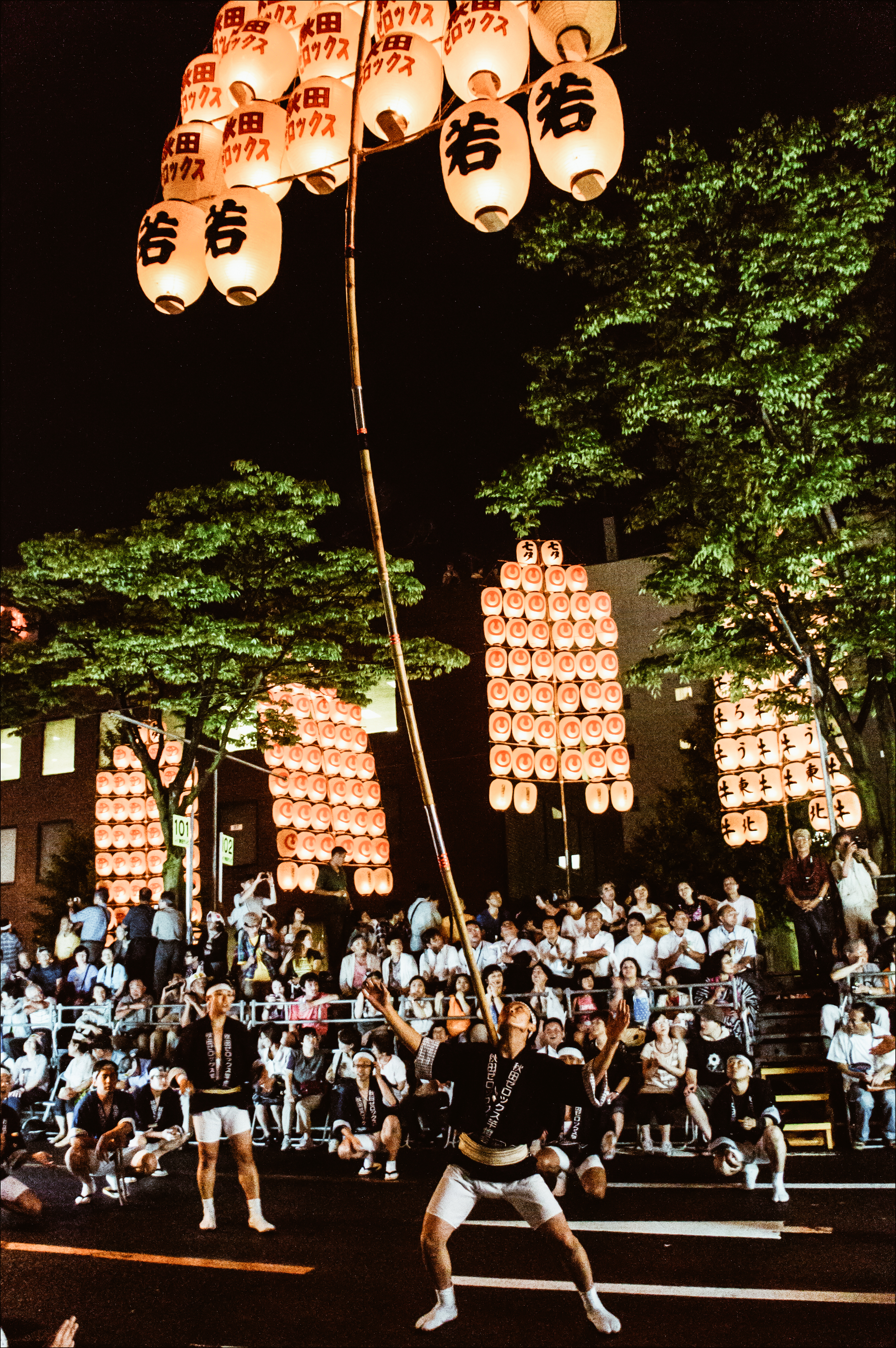
photo credits: Laura Tomàs Avellana
Nagashi
Gli artisti tengono il Kantō sul palmo delle mani e lo bilanciano con le loro dita. In questo modo altri artisti possono aggiungere Tsugitake
Hirate (mano)
Gli artisti tengono il Kantō ancora più in alto sul palmo della mano
Koshi (fianco)
Il Kantō è sorretto dalle dita. Successivamente spostato sul palmo della mano e poi sul fianco. L’artista si piega lateralmente e bilancia con le proprie gambe.
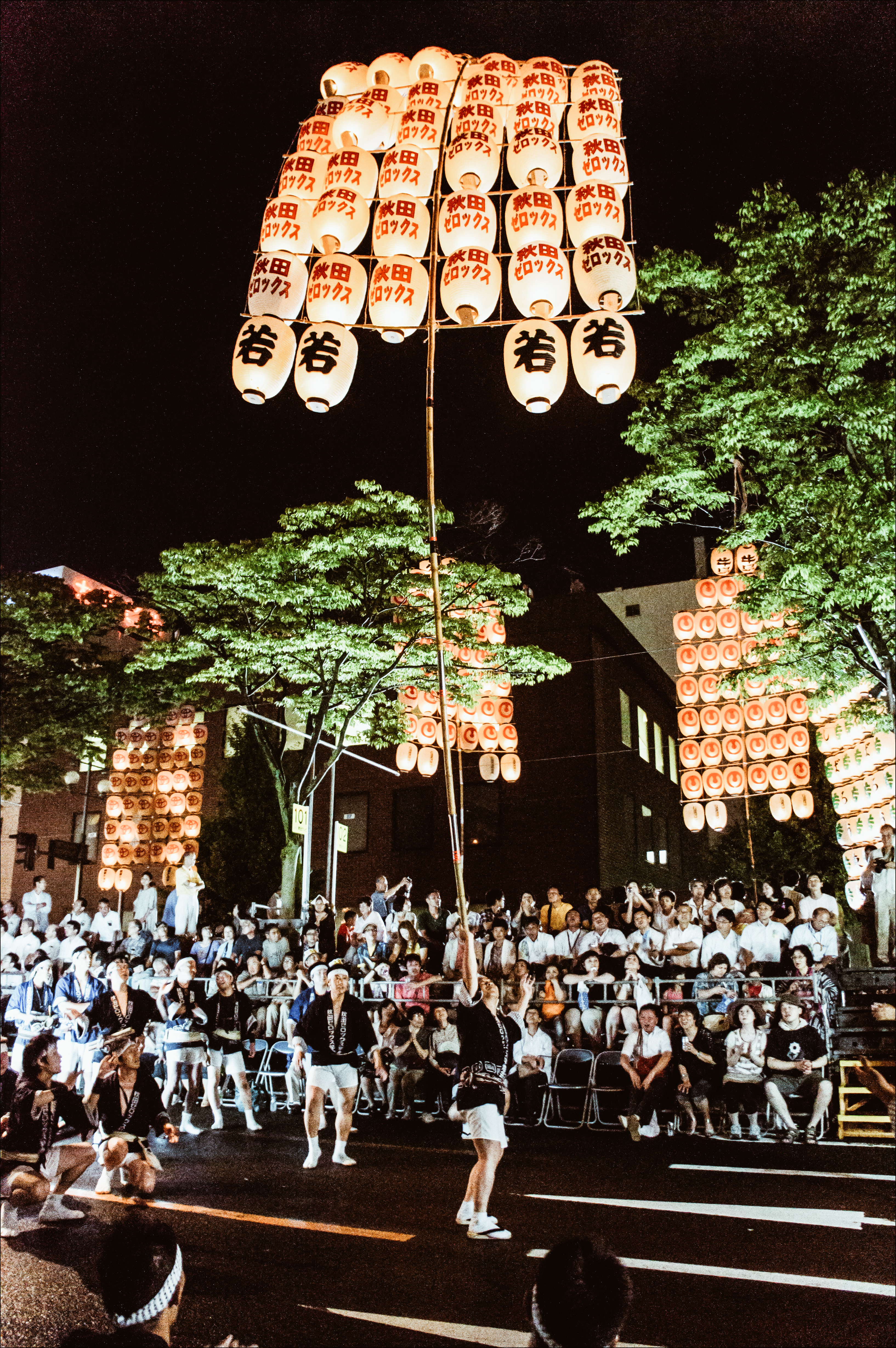
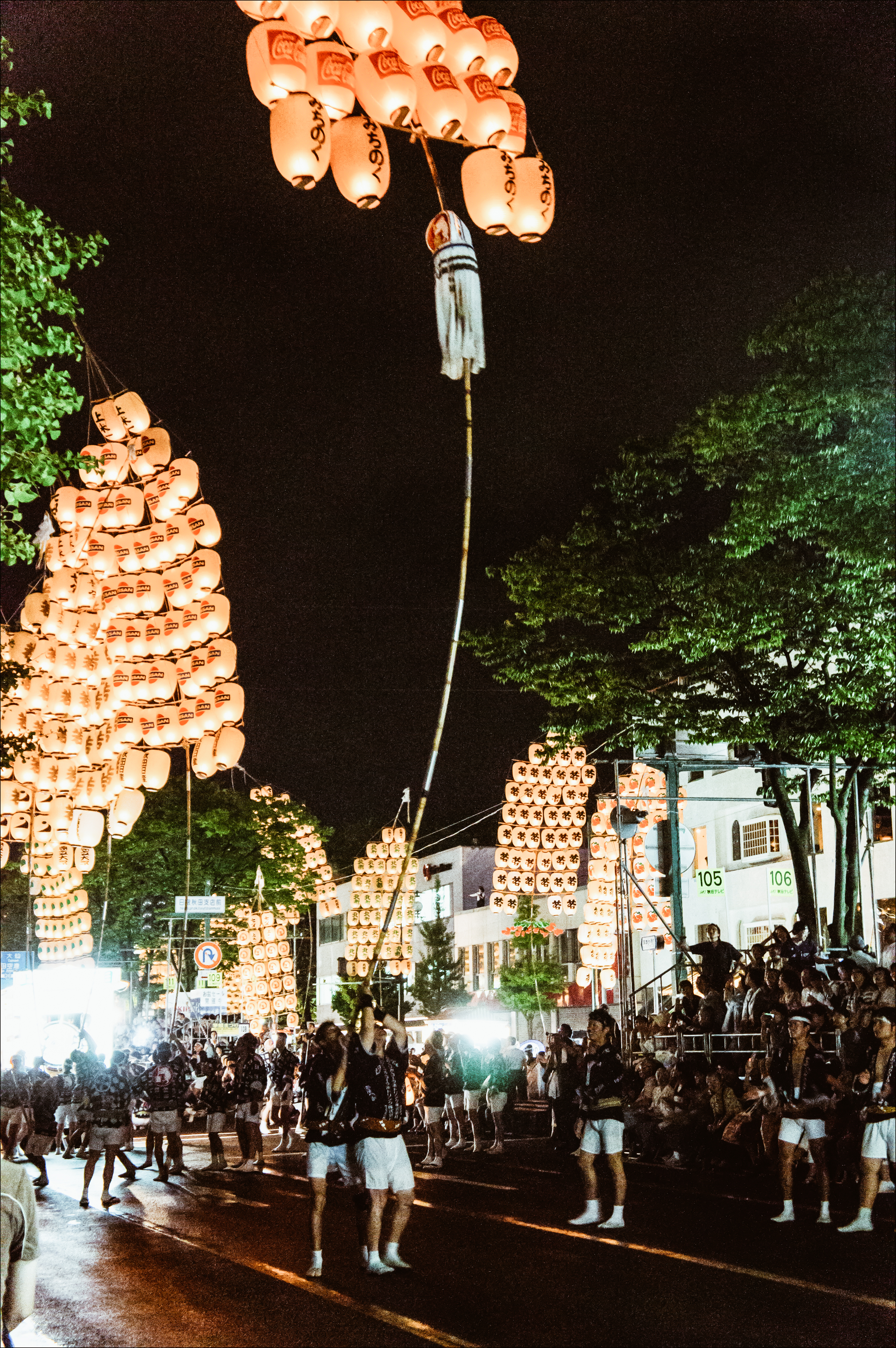

photo credits: Laura Tomàs Avellana
Kata (spalla)
Gli artisti tengono il Kantō sul palmo della propria mano dominante e formano una linea partendo dalla gamba al Kantō, alzandolo ancora più in alto.
Hitai (fronte)
L’artista tiene il Kantō con le proprie dita e poi lo sposta sul palmo, successivamente sulla fronte.
Durante la giornata si tengono anche delle competizioni per testare queste capacità, le Myogikai. Lo scopo è quello non solo di far vedere le proprie capacità, ma anche di studiare quelle degli altri partecipanti per imparare nuove tecniche.
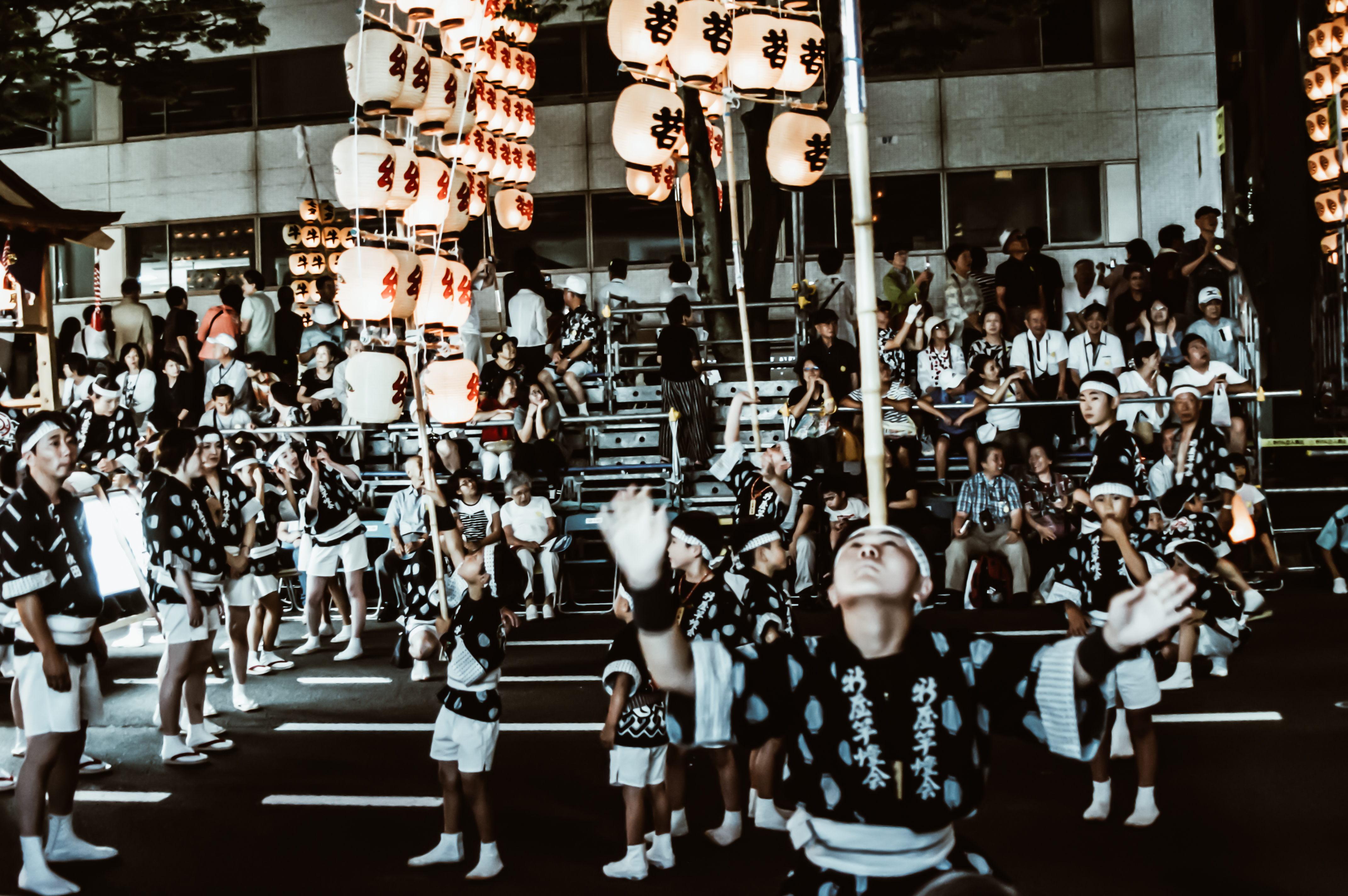

photo credits: foxeight
L’Akita Kantō oggi
La data del festival è stata cambiata per ben tre volte. Attualmente si tiene dal 3 al 6 agosto di ogni anno.
La performance serale dell’Akita Kantō è quella principale e si tiene al Kanto Oodori, una delle strade principali di Akita. Qui lo scopo dei performer non è competere fra di loro, ma intrattenere i visitatori mostrando le proprie capacità e illuminando Kanto. Più di 230 vengono sollevati allo stesso momento al suono di musica di taiko e flauti.


photo credits: foxeight
Un’esperienza unica nel suo genere che vale la pena di essere vissuta a pieno, non appena ne si ha la possibilità.
Condividi:
- Fai clic per condividere su Facebook (Si apre in una nuova finestra)
- Fai clic qui per condividere su Twitter (Si apre in una nuova finestra)
- Fai clic qui per condividere su Tumblr (Si apre in una nuova finestra)
- Fai clic qui per condividere su Pinterest (Si apre in una nuova finestra)
- Fai clic per condividere su Telegram (Si apre in una nuova finestra)
- Fai clic per condividere su WhatsApp (Si apre in una nuova finestra)
- Fai clic qui per condividere su Reddit (Si apre in una nuova finestra)
- Fai clic qui per stampare (Si apre in una nuova finestra)






